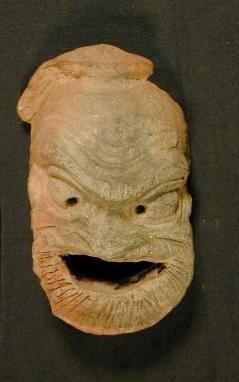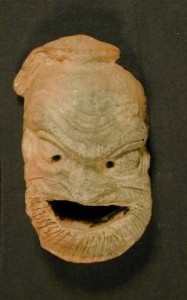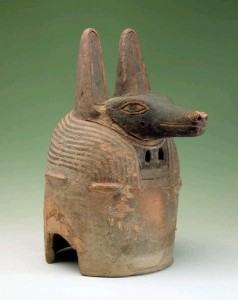Earlier this month, I shared an article about a busy prop shop in midtown Manhattan, circa 1898, which was owned and operated by a woman. It reminded me that I’ve neglected to research the contribution of women to the world of props throughout the centuries.
Just as “property man” was the common term for one who works in props from the early 1600s through World War II, so too does “property woman” appear in the descriptions and literature on theatre. The Oxford English Dictionary tracks its earliest usage to a one-act play published in 1795 titled New hay at the old market. An actor playing a prompter speaks the line:
Oh ! that alters the case. Well, let it be handsome; do you mind? Stud it with brass-nails, and cover it with the best Morocco—and tell the Property-woman to put a good soft velvet cushion in it, dye hear ?
I’ve dug up an even earlier reference from 1780. In his Remarks upon the Present Taste for acting Private Plays, R. Cumberland, Esq., writes:
Happy author, who shall see his characters thus grouped into a family-piece, firm as the Theban band of friends, where all is zeal and concord, no bickerings nor jealousies about stage-precedency, no ladies to fall sick of the spleen, and toss up their parts in a huff, no heart-burnings about flounced petticoats and silver trimmings, where the mother of the whole company stands wardrobe-keeper and property-woman, whilst the father takes post at the side scene in the capacity of prompter with plenipotentiary controul over PS’s and OP’s.
The use of the term “property-woman” appears in both America and England throughout the nineteenth century up through the early twentieth century. In many instances, it is the gender equivalent of “property-man”, describing anyone who works in props, from what we consider today to be a property master, to a property artisan and even a run crew person who handles and tracks the props backstage during a performance. In other cases, it appears to define a more specialized backstage role, used interchangeably with “wardrobe woman” and even “dresser”.
In today’s theatre, we have ceased using these gender-specific terms, and have switched to more descriptive titles, such as properties artisan, properties carpenter and properties director. However, you occasionally hear the term “property mistress” used clumsily in place of “property master” when the property master is a woman. It turns out this term was actually used fairly frequently in the early twentieth century. An example comes from a 1921 article in Century Magazine, by George P. Baker:
Just before a piece goes into rehearsal it is read to the artistic and producing force as well as to the actors, all of whom watch it for the special problems it may have for them. Immediately after the reading, copies of the play are handed to the costumer, designer of scenery, property mistress, the person in charge of lighting, and the stage-manager. As soon as possible, these meet individually with the author to make sure that they know exactly what he wants, and, as groups, to establish their plans cooperatively.
While the twentieth century may seem late in the game for women to take charge of props, keep in mind that the idea of a property master in general did not take shape until the mid-nineteenth century. People may have had the duties of a property master, but it fell under a different job (usually the prompter or an assistant).
Strangely, the term all but disappears throughout the middle of the century, only to start popping up again in the late 1980s. By the twenty-first century, more and more theatre companies were switching the job title to the more appropriate (and gender-neutral) “properties director” to describe the person in charge of the props shop. Individual shows still use the term “property master”, and most Playbills and programs use that term whether it was a man or woman doing the job. “Property mistress” shows up only in informal usage and in fluffy news articles.




